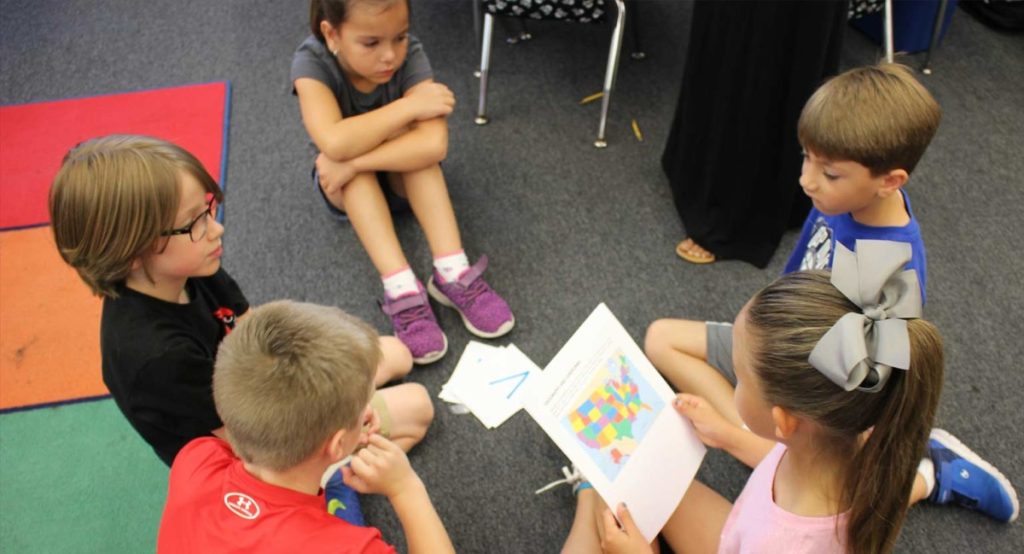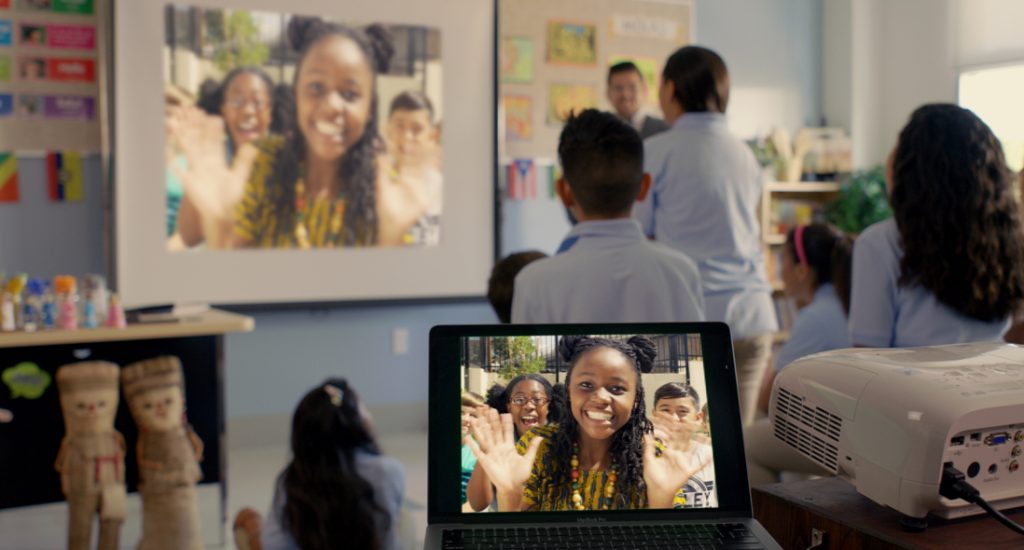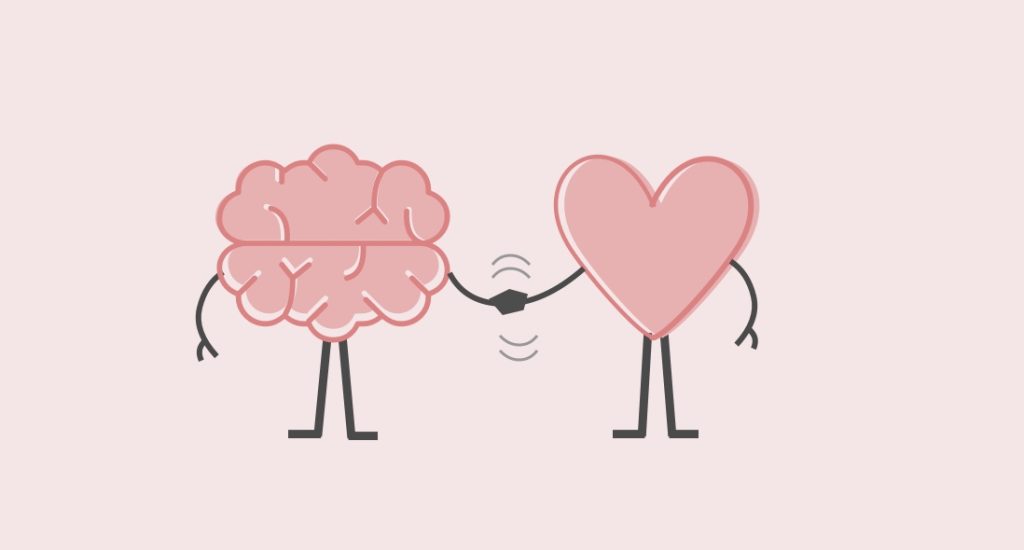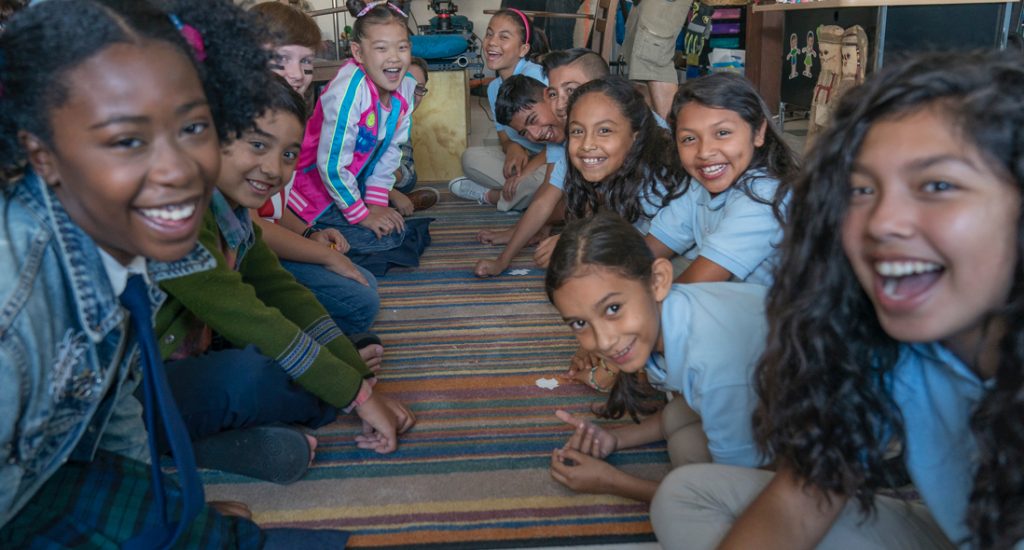Reflection is a necessary, but sometimes overlooked, part of learning. It allows students and teachers to process experiences, refine their thinking, and deepen understanding. Reflection can take a variety of formats from journal writing, to individual student reflection, to group discussion. But one of the most effective and engaging ways to incorporate reflection exercises into elementary classrooms is through the use of Reflection Circles.
Reflection Circles help students in a number of ways, including:
- Help learners develop their ideas, enhance understanding of other perspectives, and increase awareness of their own learning process
- Enable students to connect their past and present experiences, which contributes to personal and academic growth
- Make student thinking visible, allowing teachers to hear students’ perceptions and developing ideas
- Build community and encourage honest, authentic dialogue that is necessary to effectively respond to challenging issues and circumstances
For these reasons, each Empatico experience concludes with a reflection circle. This gives students time to make sense of their experience connecting with another classroom via video conference in a way that leads to deeper, more mindful learning. In particular, Empatico believes reflection promotes perspective taking, supports the development of empathy, and helps create positive expectations for meeting people outside your own community.
What makes a Reflection Circle work?
1. Open seating arrangement: Circles support reflection because they create a sense of community and equity. Everyone in the circle should be able to see everyone’s face without having to move. Ensure the circle has a clear central space by removing any furniture beforehand. Students should know how to move easily from their typical seating arrangement (e.g., rows of desks) to a circle as needed.
2. Clear conversation guidelines:Reflective and exploratory talk thrives in a safe, respectful class culture. Create and nourish this kind of classroom talk by establishing norms for reflection circles, which you can introduce and post at circle time. Consider your existing classroom guidelines or our Empatico Skills for ideas.
Some suggestions:
- Everyone needs to hear and be heard
- One person speaks at a time
- Listen carefully to each speaker
- Be honest and truthful when sharing your ideas
- Respond respectfully and positively, even if you disagree
- Respect everyone’s perspective and experience
3: All students are able to participate: Just as clear visibility matters, so does the clarity of each voice. Choose a circle talking structure that creates a sense of familiarity and ensures all students can contribute.
Possible conversation structures:
- Use a talking piece: A special object is held by the speaker and then passed to the next speaker
- Popcorn: Students call on a classmate whose hand is raised when they’re done speaking
- Call on raised hands: Teachers call on students who put their hands up
4. Meaningful conversation: Meaningful discussions make circles worth having. This means starting with quality questions and ensuring quality talk. Each Empatico experience suggests a unique set of reflection questions, which follow our belief that open-ended questions prompt deeper thinking, while closed-ended (yes-no) questions can limit quality discussion. Teach students how to relate their ideas to other students’ ideas and experiences.
You might post the following sentence frames to support students:
- I believe ___ because…
- I agree with what ____ said because…
- I respectfully disagree with ___ because…
- I want to add onto what ___ said because…
- What did you mean when you said ____ ?
5. Clear circle closure: When it’s time to end, ask students to comment on their circle experience. Then, close the circle by ringing a bell or making a specific signal that indicates it’s time to move back from circle time to ordinary time. Intentionally closing the circle makes the experience feel special.
The teacher’s role during reflection circles:
1. Wait for students to answer: After posing a question… wait! (for three or more seconds!) Consider asking students to show a signal (e.g. a raised thumb) when they have an idea to share, and open discussion when the majority of students are ready. Research shows increased wait time leads to more thoughtful student responses, increased student-to-student exchanges, and greater student participation.
2. Support group cohesion and community: Ensure the reflection circle allows everyone to hear and be heard while keeping students talking to each other (not to you, the teacher).
- Focus on ideas: Expect good listening and keep everyone on the same page by asking students to revoice key ideas. For example:
- “Samir, can you repeat what Marcia said in your own words?”
- Follow up with: “Marcia, was that what you were trying to say?”
- Link contributions: Help students link their ideas to the on-going conversation by using questions like these:
- “Who agrees?”
- “Who disagrees?”
- “Who wants to add on to what Carlos just said?”
- Press for reasoning: When students respond with brief or surface answers (e.g., “I agree.”) press students to explain their reasoning. Use questions like these to draw out logical connections and reasoning:
- “Why do you think that?”
- “Can you say more about that? Take your time…We’ll wait.”
- “That’s a complicated idea, Talia. I need to hear it again. Can you say it one more time, so everyone understands your thinking?”
Reflection Circles can be particularly helpful when introducing your students to new experiences or people as we do with Empatico exchanges. During these experiences you may be introducing challenging new ideas, differing perspectives, or even surprising similarities that students never expected. The experience of reflecting will help students identify what they learned, what outstanding questions they have, and how their perceptions of others may have changed so they can digest the experience in a more meaningful way.
To learn more about Empatico and how we incorporate Reflection Circles, please check out our research- and standards-based activities.
“Empatico aligns strongly with my teaching strategy to develop a learning community in my classroom. Sprinkling Empatico skills and Reflection Circles throughout everything I’m doing has helped level up the conversation in my class. I want to be able to leave my thumbprint on students’ hearts, and Empatico is helping me do that.” – Lesa Haney, 3rd grade teacher, Rooster Springs Elementary School, Austin, Texas



